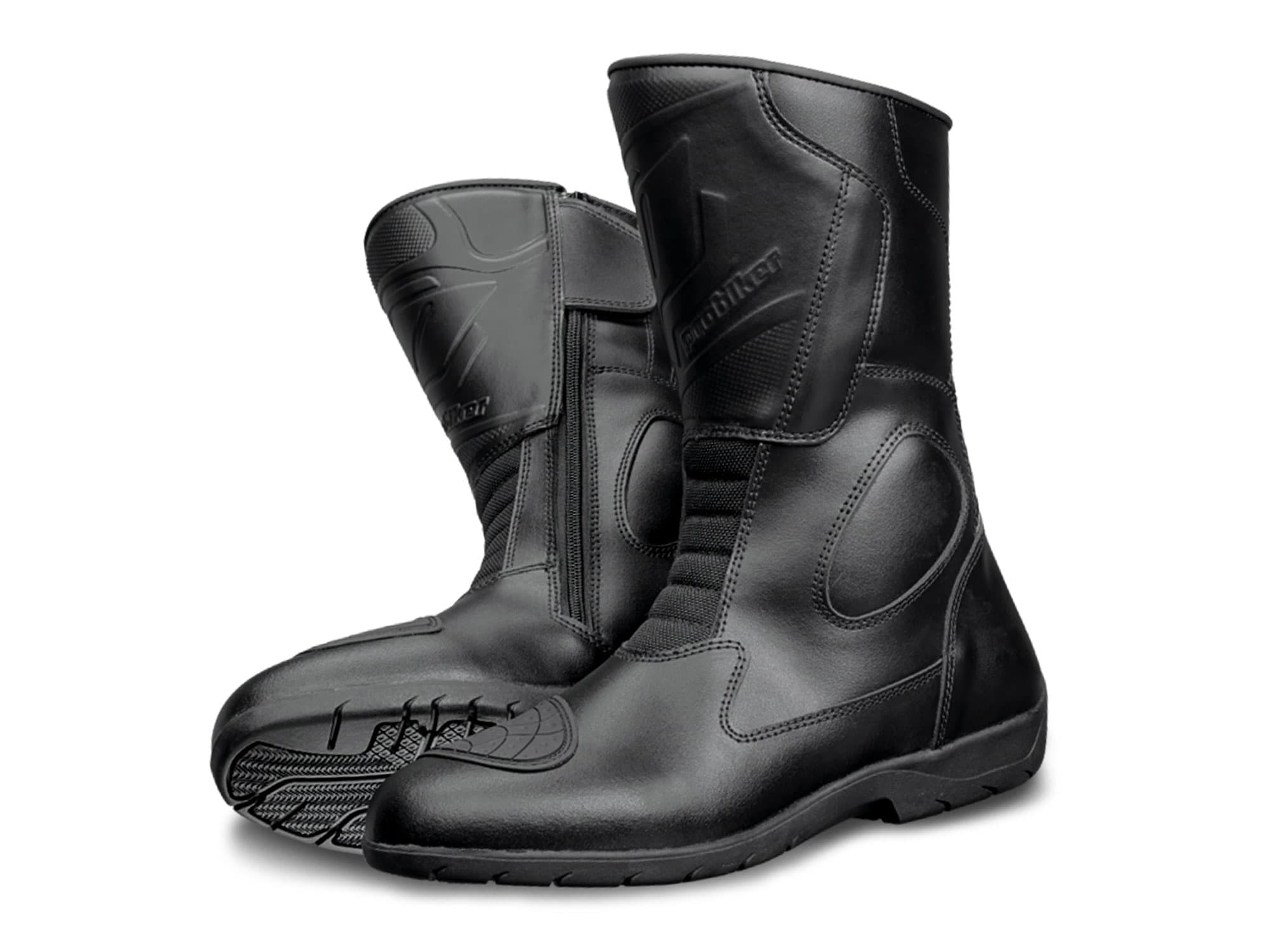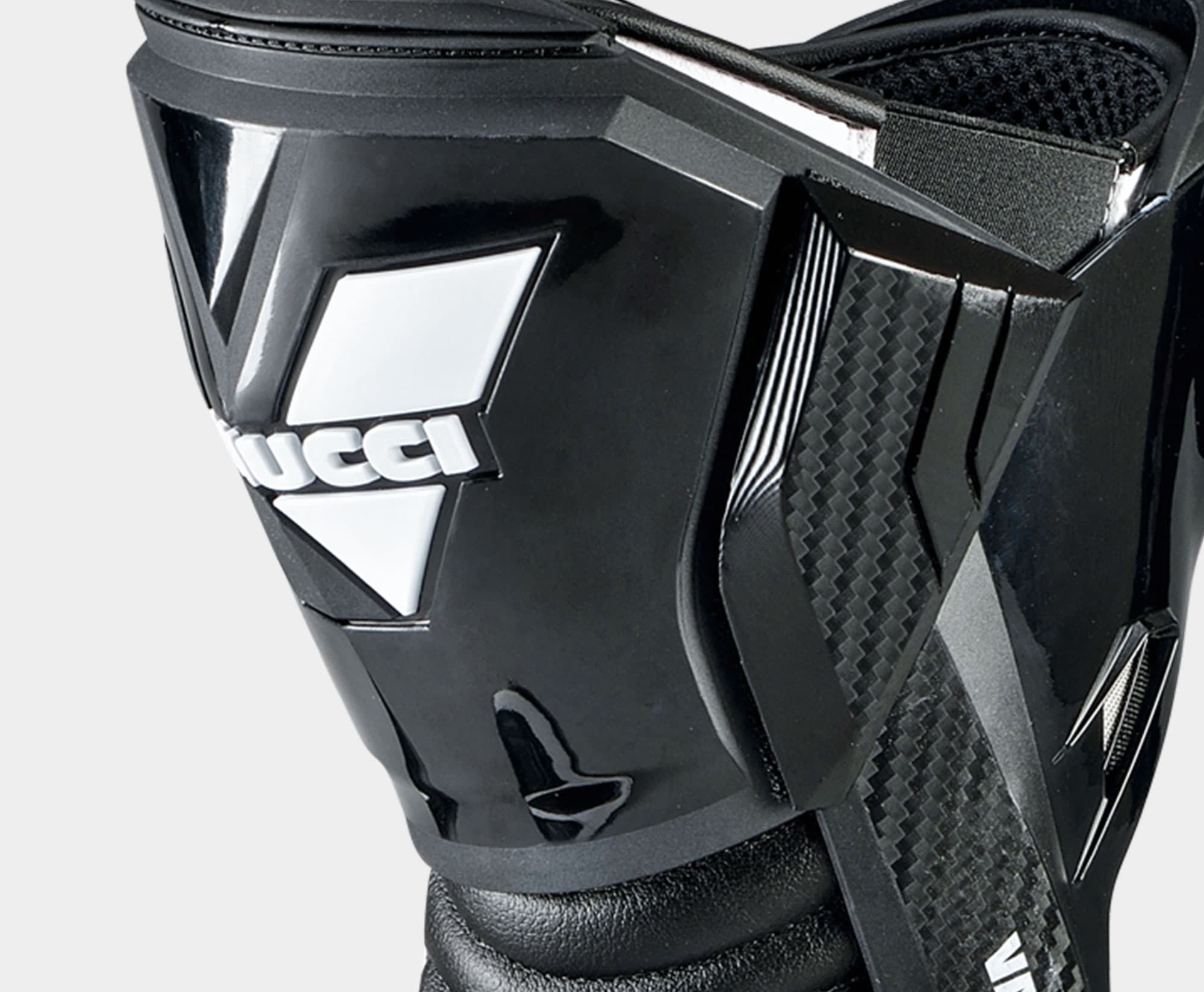Boots
Motorcycle boots don not need to be particularly stylish, nor do you need to walk in them for hours. What is important is that they give your feet strong support, ideally right up to your shins.

Reinforcement in the sole, toe and heel caps, thick ankle padding – all this may not exactly make your boots more comfortable to walk in, but if your motorcycle has ever toppled over and trapped your foot, you'll know just how important these safety features are.
- Nevertheless, your boots must not be uncomfortably tight either, of course. So the same rule applies as for motorcycle clothing. When you try on a pair of boots, you should get on a motorcycle and see how they feel in riding posture.
- For daily commuters and touring bikers, it is advisable to choose boots with a climate membrane.
- Lace-up boots, even if they have ankle protection, will not impress the examiner when you take your test. Firstly, because there is at least a theoretical danger of the laces catching on the footrest. Secondly, because laces can wear through or snap very quickly in the event of an accident, and then your boots no longer grip your feet. So when wearing lace-up boots, always remember to tuck the ends of the laces safely into the top of the boot.



Shin protection
Motorcycle boots have a sturdy shin-protection panel, which is particularly prominent on racing boots.

Gearshift reinforcement
On the top of the foot, just behind the toe (see large picture). Obligatory for almost all motorcycle boots. Protects both the boot and your foot against pressure points when operating the shift lever.
Accessory Tip


The regulations leave it largely up to us bikers how we choose to protect ourselves against cold, wet and the possible consequences of an accident. The main exception is Paragraph 21a of the German Road Traffic Regulations (StVO), which states that we must "wear a suitable protective helmet while riding on public roads". It is a slightly different situation when you take your practical motorcycle test. Appendix 7 of the Driving Licence Regulations (FeV) states: "Candidates taking class A, A1, A2 and AM tests must wear suitable protective motorcycle clothing, comprising a properly fitting motorcycle helmet, motorcycle gloves, a close-fitting motorcycle jacket, a back protector (if not integrated into the motorcycle jacket), motorcycle trousers, and motorcycle boots with adequate ankle protection."
In the following pages we show you what exactly constitutes a suitable protective helmet and what motorcycle gear approved for taking your practical test actually looks like.






